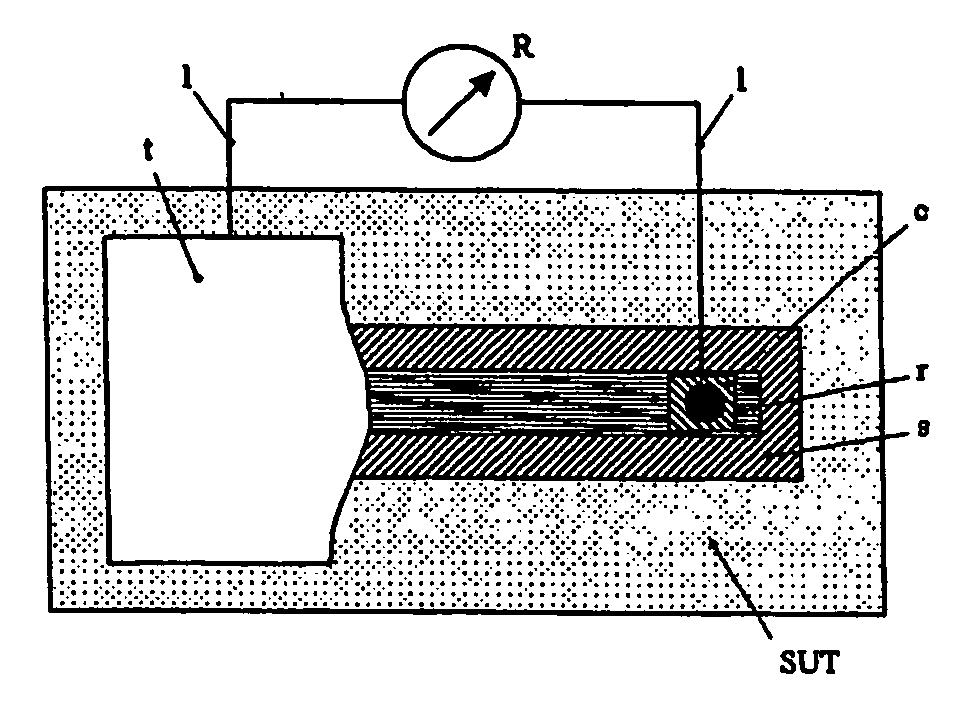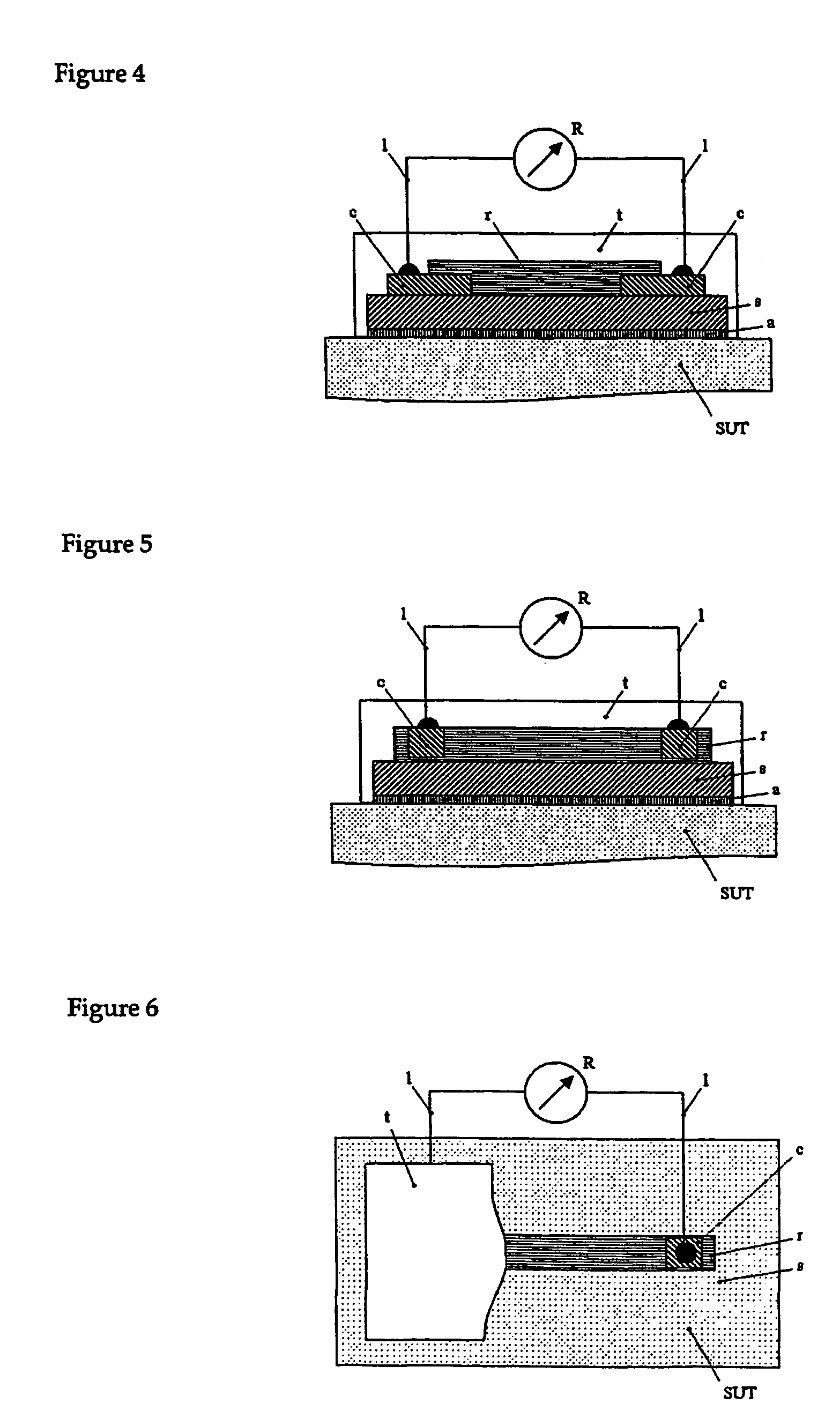Strain gauges
a strain gauge and gauge body technology, applied in the direction of positive temperature coefficient thermistors, instruments, iron-filament ballast resistors, etc., can solve the problems of increasing power dissipation, requiring rather sophisticated measurement techniques, limited sensitivity of metal wire and foil gauges, etc., to achieve high sensitivity, scalable and economic
- Summary
- Abstract
- Description
- Claims
- Application Information
AI Technical Summary
Benefits of technology
Problems solved by technology
Method used
Image
Examples
example 1
[0042]A tunnel strain gauge was produced using a nanoparticle film based on a functionalised nanoparticle concentrate consisting of gold nanoparticles with an average diameter of 18 nm which were surrounded by self-assembled capping layers of 4-nitrothiophenol (4-NTP). The film was sprayed onto an ink jet transparency with a thickness of 0.14 mm as a substrate using an airbrush.
[0043]Thin gold wires (diameter 0.05 mm) were attached to the film using silver paint in order to connect the gauge to an Ohmmeter. The separation between the contacts was 6 mm, and the width of the gauge film was 5 mm. Since the room temperature resistance of the unstrained gauge was ca. 250 kΩ and the resistance of the leads was of the order of 1 Ω, a two-point resistance measurement was sufficient.
[0044]To assess the sensitivity of the nanoparticle tunnel strain gauge, the gauge was attached to surfaces with different radii of curvature, thus exposing the gauge to varying bend strains. Both compressive and...
example 2
[0045]A tunnel strain gauge was produced using a nanoparticle film deposited with the technique described by Raguse et al. (WO125316A1, 2001). The film consisted of gold nanoparticles with an average diameter of 8 nm which were cross-linked by C2-dithiol. The film was deposited onto a nanoporous fluoropolymer (PVDF) membrane with a thickness of 0.14 mm as a substrate using a filtration method.
[0046]Thin gold wires (diameter 0.05 mm) were attached to the film using silver paint in order to connect the gauge to an Ohmmeter. The separation between the contacts was 7 mm, and the width of the gauge film was 3 mm. Since the room temperature resistance of the unstrained gauge was ca. 3 MΩ and the resistance of the leads was of the order of 1 Ω, a two-point resistance measurement was sufficient.
[0047]To assess the sensitivity of the nanoparticle tunnel strain gauge, the gauge was attached to surfaces with different radii of curvature, thus exposing the gauge to varying bend strains. Both co...
example 3
[0048]A tunnel strain gauge similar to the one described in example 1 was produced; however, the nanoparticle concentrate was based on silver nanoparticles with an average diameter of 50 nm instead of gold nanoparticles as in example 1. FIG. 13 shows the measured resistance change as a function of the bend strain. The gauge factor G=ΔR / R / ε is about 60.
PUM
| Property | Measurement | Unit |
|---|---|---|
| size | aaaaa | aaaaa |
| particle diameters | aaaaa | aaaaa |
| sizes | aaaaa | aaaaa |
Abstract
Description
Claims
Application Information
 Login to View More
Login to View More - R&D
- Intellectual Property
- Life Sciences
- Materials
- Tech Scout
- Unparalleled Data Quality
- Higher Quality Content
- 60% Fewer Hallucinations
Browse by: Latest US Patents, China's latest patents, Technical Efficacy Thesaurus, Application Domain, Technology Topic, Popular Technical Reports.
© 2025 PatSnap. All rights reserved.Legal|Privacy policy|Modern Slavery Act Transparency Statement|Sitemap|About US| Contact US: help@patsnap.com



